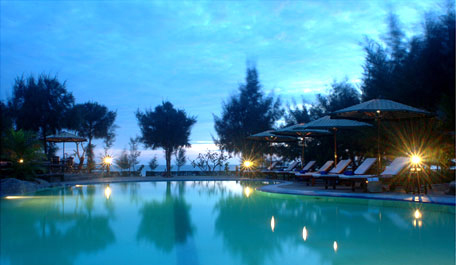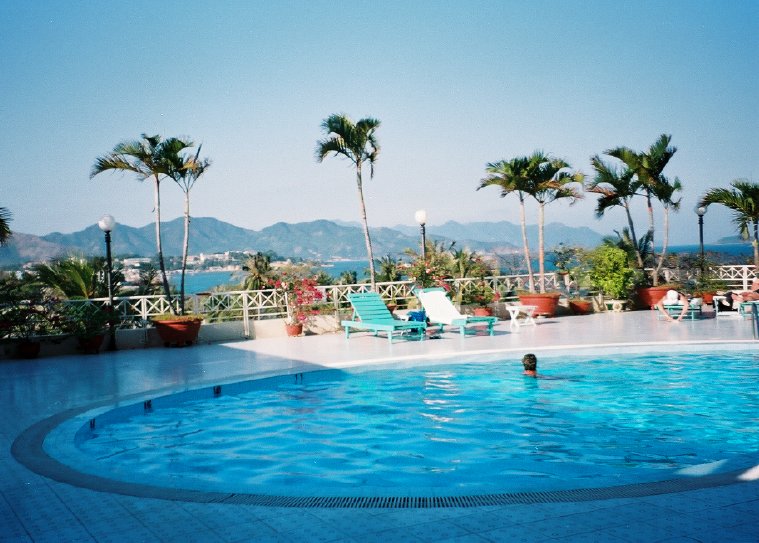INDOCHINA INTERNATIONAL CONSULTING CO., LTD
HO Add: 62L/36 Nguyên Hồng, Ward 11, Bình Thạnh District, HCMC - Vietnam
Biz Office Add: #48 Road No 11, Quarter 6, Hiệp Binh Chánh Ward, Thủ Đức, HCMC - Vietnam
®Source: http://viipip.com should be clearly quoted for any use of information extracted from our website.
Publication permit No: 60/GP-TTĐT , April 05, 2010.

Business in brief 16 Dec 2011
Date: 12/18/2011 10:55:58 PM
(Sourced from various news agencies)

Business in brief 16 Dec 2011
Prime Minister Nguyen Tan Dung requested the Ministry of Foreign Affairs to stop calling for investments in steel, cement and garment industries. The request was delivered at the Ministry of Foreign Affairs’ 27th meeting on December 14, 2011. At the meeting, Prime Minister highlighted that it is tasks of ambassadors, commercial counselors to persuade other countries to recognize Vietnam as a market economy. He also ordered the ministry to contribute to expand export market, attract more inbound investments focusing on high-tech projects and enterprises. Dung also confirmed that Vietnam government will provide best support to attract investments.
The Vietnam Pepper Association reported on December 15 that the country’s pepper exports have reached about 130,000 tons, bringing in a turnover of US$720 million. This has been due to several advantages in the export market and an increase in export prices. For the last three years, pepper prices have increased steadily. Currently, pepper price in the domestic market is around VND150,000 per kilogram, while price in the beginning of the year was VND80,000 per kilogram. With productivity of 3 tons per hectare, pepper farmers will gain high profits this year, said Do Ha Nam, chairman of the Vietnam Pepper Association. Since 2001, Vietnam has remained a top pepper exporter in both value and volume in the world market. According to the Ministry of Agriculture and Rural Development, in November this year, export volume was 6,000 tons, valued at $40 million. With this, the total pepper export volume in 11 months was 122,000 tons and $713 million in value.
Vietnam has earned US$515 million in revenue from exporting vegetables and fruit to become the fifth largest exporter in the world. In 2011, Vietnam’s vegetables and fruit exports have increased by 40.6 percent compared to last year due to the growing consumer demand in the Asian market, especially from China, Japan, Indonesia and the Republic of Korea, according to the Vietnam Vegetables and Fruit Association. In the first 11 months of the year, Vietnam’s export earnings from China reached US$114.5 million (up 119.6 percent), US$51.2 million from Japan, US$30.9 million from Indonesia, US$24.9 million from Holland, US$17.5 million from the Republic of Korea and US$10.6 million from Malaysia. Vietnam’s most favorite products are condensed fruit juice, canned fruit, sweet corn and lychee. Recently, Japan has placed orders for fresh lychee and sweet corn and the Republic of Korea also has a plan to import chili and potatoes from Vietnam next year.
The Department of Food Hygiene and Safety will issue a regulation requiring the labeling of genetic modified organism (GMO) food originated from foreign countries. The proposed regulation will replace Decision 23/2007 issued lay the Ministry of Health on March 18, 2007 on inspections of imported-food hygiene and safety. Under the current rule, any imported food products possessing 5% content from GMO must be attached with labels to make consumers aware of GMO. The Ministry of Agriculture and Rural Development issued a circular on hygiene and safety of imported food in March. However, the ministry did not require labeling on the package to indicate imported food products are genetically engineered. According to the Food Safety Law effective since June last year, GM food imported from overseas is subject to the supervision and management of the ministries of Agriculture and Rural Development-Health, and Industry-Trade.
The Federal Republic of Germany has pledged official development assistance (ODA) of more than US$372 million to Vietnam during the next two years – the biggest sum yet allocated. The announcement was made at a press conference held by the German Embassy in Ha Noi yesterday after representatives from both countries concluded two-day negotiations on development co-operation. German Ambassador Claus Wunderlich said Germany expected to further the bilateral co-operation, adding that Vietnam was the most significant country receiving ODA from Germany in South-east Asia. Of the assistance, nearly $1.3 million will be spent on repairing flood damage and enhancing flood protection in the Cuu Long (Mekong) Delta.
National Assembly policymakers agreed that the Government should temporarily stop establishment of the nation’s economic zones and border economic zones in Vietnam due to poor results. Vietnam has so far established 15 EZs and 18 border EZs. The Standing Committee was told that more than US$50 billion had been invested in 15 economic zones in the past 20 years. However, reports on what economic results had been achieved was still limited, according to Finance and State Budget chairman Phung Quoc Hien. The Ministry of Planning and Investment (MPI) report said that the 15 economic zones covered more than 660,000ha. It estimated that their total turnover was about $8 billion and exports valued at nearly $800 million. The zones provided jobs for 30,000 people and contributed about $1 billion to the State budget by end of 2011.
Nearly 262 companies from 17 nations in the world including 20 from Vietnam, have participated in the 6th Cambodia Import-Export & One Province One Product Exhibition Plus ACMECS which officially opened in Phnom Penh on December 15. The annual event aims to help businesses promote trade and seek partners. The focus is on trade promotions among five ACMECS (Ayeyawady-Chao Phraya-Mekong Economic Cooperation Strategy) countries - Cambodia, Laos, Myanmar, Thailand and Vietnam by their leaders at the fifth ACMECS held in Phnom Penh in November last year. Trade exchange between Vietnam and ACMECS countries has developed constantly in recent years and is expected to reach US$12 billion this year. In the first ten months of the year, Cambodia’s bilateral trade turnover reached nearly US$2.3 billion, up 57 percent from a year earlier.
Vietnam and Cambodia have made new breakthroughs in road, water, and air transport cooperation. On the sidelines of the 17th ASEAN Transport Meeting (ATM-17) held in Phnom Penh on December 15, both Vietnamese Minister of Transport Dinh La Thang and Cambodian Minister of Public and Transport Tram lv Tek met to discuss concrete measures. The two ministers agreed on orientations for cooperation in the 2011-2015 period with a vision for 2020, which lays stress on construction and upgrading of road links in Asia, ASEAN, and the Mekong Sub-region. They also agreed to boost the implementation of bilateral and multilateral road transport agreements. The two ministers pledged to coordinate with donors in building a railway line linking Phnom Penh and Ho Chi Minh City and to accelerate the signing of an agreement on railway transport in ASEAN. They expressed hopes that a Cambodia National Airline will be set up soon on the basis of the Angkor Air carrier.
A trade fair of high-quality Vietnamese goods opened in central Danang city on December 16, drawing 250 stands from more than 120 businesses across the country. On display are various kinds of goods, including handicrafts, garment and textiles, footwear and food. The fair aims to encourage local consumers to buy made-in-Vietnam products. It also creates a good opportunity for businesses to introduce their products and seek partners. The Deputy Director of the Danang municipal Department for Industry and Trade, Lu Bang, said the fair is the second of its kind ever held in the city to help local businesses expand their distribution network and find new markets.
A Vietnam-RoK business forum was held in Hanoi on December 15, aimed at enhancing economic exchanges and introducing economic policies and corporate social responsibility of the two countries. Addressing the function, RoK Ambassador to Vietnam Ha Chan Ho expressed his pleasure at the strong development of bilateral investment and trade between Vietnam and the RoK and spoke highly of Vietnam’s economic recovery, despite difficulties. He said RoK enterprises want to develop their long-term business in Vietnam and pledged to make contributions to social development in the Southeast Asian country. Over the past three years, RoK investors in Vietnam have spent US$10 million on social activities, including granting scholarships, providing free medical check-ups, building houses and giving relief aid to disaster-hit victims.
Vietnamese businesses will have a good opportunity to introduce their products to German and other European Union (EU) consumers at Vietnam Week in Germany, scheduled for June 6-16. The event aims to promote Vietnamese trademarks and stimulate the consumption of Vietnamese goods in the EU, as well as helping Vietnamese businesses secure a firm foothold in this demanding market. Almost all Vietnamese products to be displayed have popular brand names such as Nam Roi pomelo, Hoa Loc mango, and Trung Nguyen coffee. In addition, many frozen products will be available at Metro supermarkets in 12 major cities in Germany. According to the European Market Department under the Ministry of Industry and Trade (MoIT), Germany is now the EU’s largest economy and is an attractive destination for many investors in the world, including from Vietnam. The event is co-organised by the MoIT, Metro Cash & Carry and Vietnam’s trade office in Germany.
The oil and gas sector, which employs more than 50,000 workers and accounts for nearly 25% of the country’s GDP, has earned US$34 billion in revenue this year and paid over US$7 billion in taxes. The industry has expanded its activities to 18 countries such as Malaysia, Algeria, Japan, the US, and the Republic of Korea. It is planning to penetrate other strongly potential markets namely the Commonwealth of Independent States, Africa and the Middle East, and diversify investment forms together with major partners, said Nguyen Quoc Thap, Vice CEO of Vietnam Oil and Gas Group (PetroVietnam). In addition, the sector will continue completing domestic seaport projects and calling for investment in them. PetroVietnam currently has six projects worth US$3 billion each and 11 others worth US$2 billion each.
Japanese tire-maker Bridgestone said on Thursday it would open a subsidiary dealing with production and sales in Vietnam next year, to accompany a new tire factory in construction. The subsidiary company, Bridgestone Tire Manufacturing Vietnam, will be 100 percent owned by Bridgestone and will manage a factory in Vietnam due to begin operations in 2014, making tires for export to Europe, the United States and Japan. The factory in Vietnam is expected to employ some 1,900 workers and have an output of 24,700 tires per day by 2016. The Japanese tire-maker said the new subsidiary was necessary as it had already raised the production capacities of its factories in Thailand and Indonesia. Bridgestone, which vies with France’s Michelin to be the world’s top tire-maker, saw a net profit of 98.9 billion yen ($1.18 billion) in 2010, a huge rise from a 1.04 billion yen profit in 2009. The worldwide recovery in auto sales has been driven by emerging market demand from the likes of China, India and Brazil.
Vietnam’s Leather and Footwear Association has reported that footwear exports in the first 11 months of the year reached US$5.7 billion and expected to reach $6.2 billion in 2011. Footwear exports earned $5.11 billion in the first 10 months of 2011, up 25.8 percent year-on-year, ranking footwear at third place in terms of export turnover after garments and crude oil. This growth is being attributed mainly to the European Commission’s abolishment of anti-dumping duties against Vietnamese leather shoes. However, the volume in footwear exports to the EU decreased by 20-30 percent last month due to the economic crisis in most EU countries. Vietnam Leather and Footwear Association forecasts that growth in this sector will be slower in 2012 than this year, and only expect an increase of 12 percent.
The Vietnam Oil Corporation (PV Oil) and Materials-Petroleum Joint Stock Company (Comeco) officially started on Tuesday the service of purchasing bio-fuel E5 via OP and OP Plus cards issued by the Ocean Commercial Joint Stock Bank (Ocean Bank). Holders of OP and OP Plus cards can now buy petroleum products from any of the 15 participating Comeco’s pumping stations. At present, the bio-fuel E5 is sold in a total of 144 pumping stations in 34 provinces and cities nationwide.
The Tay Nguyen (Central Highlands) province of Dak Lak has attracted 47 new projects this year with a total investment capital of more than VND2 trillion (US$95.2 million). Construction projects include agricultural and forestry product manufacturing and processing plants, the VND100 billion ($4.7 million) industrial sewing factory project from the Vietnam National Textile and Garment Group and a VND300 billion ($14.2 million) Metro supermarket project. The majority of projects have currently started construction or become operational, creating jobs for thousands of local ethnic labors.
The domestic market was estimated to consume about 25 million handbags, briefcases and backpacks this year, including 15 million made by domestic enterprises, according to the Association of Footwear and Leather of Vietnam (Lefaso). The consumption of handbags, briefcases and backpacks next year is expected to slightly increase by 5-8 per cent. The export turnover of these products in the first 11 months of this year reached US$1.13 billion, a year-on-year increase of 33 per cent, according to Lefaso. Meanwhile, the output of footwear from domestic producers is expected to reach 70 million pairs worth US$750 million, equivalent to 50 per cent of domestic market demand.
The southern province of Long An’s industrial zone attracted 611 projects since the beginning of this month, including 118 foreign direct investment (FDI) projects with a total registered capital of over US$1.428 billion. In November, provincial industrial zones attracted 10 new projects in the fields of steel making, plastic spare parts processing, packing and carton manufacturing, including three FDI projects with a total registered capital of $2.33 million and seven domestic invested ones, worth more than VND338 billion ($16 million). The new projects are believed to create jobs for 900 laborers.
The Cai Mep International Terminal, which officially began operating earlier this month, has had a highly productive start in loading and unloading cargo from container vessels. The terminal achieved 125 berth moves per hour, equal to 125 containers of all sizes, using a system of four quay cranes. At this speed, the port would be able to facilitate faster transport times between Vietnam and Europe and the US.
(Source:Agencies)
- FDI capital continues to pour into Vietnam (6/11/2025 1:20:33 PM)
- Thanh Hoa receives good news: Preparing to have an additional industrial park of up to 470 hectares, creating jobs for nearly 30,000 people (6/11/2025 1:15:09 PM)
- Industrial Park Real Estate: Waiting for the New Generation of FDI (6/11/2025 1:10:15 PM)
- A wealthy Vietnamese city will have two special economic zones after the merger (6/11/2025 1:04:42 PM)
- 30 billion USD capital FDI in Việt Nam by 2025, a series of "ông big" races to expand the land fund (6/11/2025 12:55:26 PM)
- the 2nd largest city in the North will start construction on an international economic zone (6/11/2025 12:50:20 PM)
- Japanese giant Sumitomo continues to want to build an industrial park in the countrys fourth smallest province. (6/11/2025 12:40:45 PM)
- 3 foreign corporations want to invest billions of dollars in Ba Ria - Vung Tau (6/11/2025 12:34:30 PM)
- Lotte Group member starts construction of nearly 1,000 billion VND logistics center in the province with the most industrial parks in Vietnam (6/11/2025 12:33:26 PM)
- Forming a regional center for manufacturing spare parts and components (6/11/2025 12:24:08 PM)
- Vietnams first wafer factory is about to start construction (6/11/2025 12:19:09 PM)
- Dong Nai attracts foreign investors (6/11/2025 12:13:27 PM)
- Tay Ninhs largest industrial park welcomes a $150 million high-end knitted fabric factory project (6/11/2025 12:11:00 PM)
- (6/11/2025 12:09:10 PM)
- Vietnam will become a destination for Chinese investors in the future (11/6/2023 1:03:19 PM)

- FDI capital continues to pour into Vietnam
- Thanh Hoa receives good news: Preparing to have an additional industrial park of up to 470 hectares, creating jobs for nearly 30,000 people
- Industrial Park Real Estate: Waiting for the New Generation of FDI
- A wealthy Vietnamese city will have two special economic zones after the merger
- 30 billion USD capital FDI in Việt Nam by 2025, a series of "ông big" races to expand the land fund










 ADB: Vietnam’s 2009 GDP growth to be highest in South East Asia
ADB: Vietnam’s 2009 GDP growth to be highest in South East Asia MGM Grand Ho Tram: Vietnam’s First ‘Las Vegas Style’ Integrated Resort
MGM Grand Ho Tram: Vietnam’s First ‘Las Vegas Style’ Integrated Resort Nha Trang’s Twin Towers project licenced
Nha Trang’s Twin Towers project licenced Foreign investors still have good opportunities in Vietnam
Foreign investors still have good opportunities in Vietnam Sierra Wireless gets a foot in Vietnam’s ICT market
Sierra Wireless gets a foot in Vietnam’s ICT market